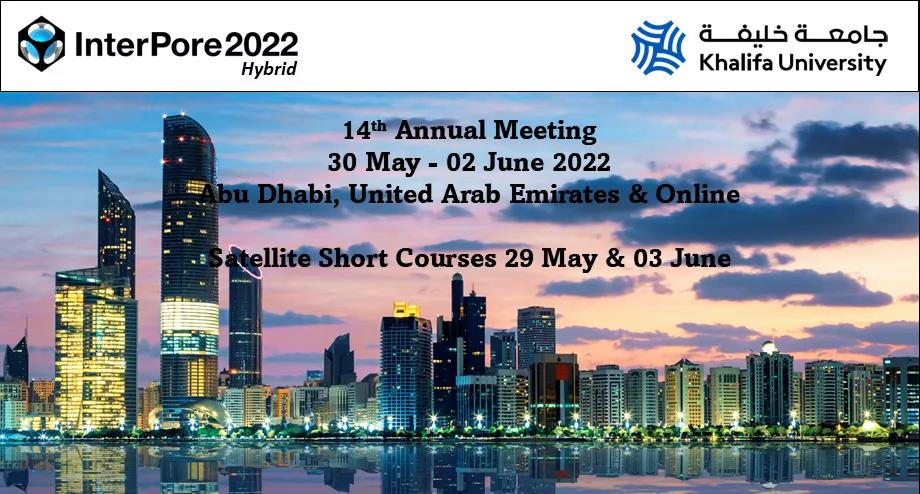Microscopic insights into CO₂-shale oil miscibility via interaction energy coupled with pore confinement: Implications for CO₂-enhanced oil recovery
Abstract view|356|times PDF download|116|times Supplements download|64|times
Abstract
As CO₂ injection can enhance the efficiency of shale oil extraction and reduce CO₂ emissions, it has been utilized widely in the development of shale oil resources. Minimum miscible pressure is an important parameter describing the miscibility of CO₂ and shale oil, which is of great importance for determination of CO₂ injection strategy. However, due to the unclear phase boundary caused by the confinement effect in shale nanopores, it is difficult to determine the minimum miscible pressure of CO₂ and shale oil. In this study, a new minimum miscible pressure estimation method is constructed, that is suitable for nanopores based on the significant co-evolution of pore wall adsorption and confined-bulk phase interactions. This method can mitigate the limitations of traditional minimum miscible pressure calculation methods relying on fluid interfaces. Furthermore, the confinement effects on the miscibility process are analyzed using a theoretical method and molecular dynamics simulation on the microscopic scale. The results demonstrate that the minimum miscible pressure of CO₂ and shale oil initially decreases as the pore size decreases. When the pore size decreases to a certain extent, the minimum miscible pressure increases with the thickness of the adsorbent layer rising and the CO₂ diffusion coefficient decreasing. Temperature elevation raises the minimum miscible pressure as it intensifies molecular thermal motion, weakens fluid adsorption, and reduces interaction energy, which are not conducive to miscibility. This study can provide an essential basis for the optimization of CO₂ injection pressure in shale oil reservoir development.
Document Type: Original article
Cited as: Yu, X., Dong, H., Li, Y., Liu, C., Zhang, L., Chen, Z. Microscopic insights into CO₂-shale oil miscibility via interaction energy coupled with pore confinement: Implications for CO₂-enhanced oil recovery. Advances in Geo-Energy Research, 2025, 17(2): 107-120. https://doi.org/10.46690/ager.2025.08.03
Keywords
References
Abdurrahman, M.; Permadi, A. K.; Arsad, A.; et al. Minimum CO₂ miscibility pressure evaluation using interfacial tension (IFT) and slim-tube hybrid tests. ACS Omega,2023, 8(9):8703-8711.
Alafnan, S. Carbon dioxide and methane sequestration in organic-rich shales: Nanoscale insights into adsorption and transport mechanisms. Journal of Energy Resources Technology-Transactions of the ASME, 2022, 144(7): 073010.
Allen, M. P., Tildesley, D. J. Computer Simulation of Liquids. Oxford, UK, Oxford University Press, 2017.
Bu, H., Ju, Y., Tan, J., et al. Fractal characteristics of pores in non-marine shales from the Huainan coalfield, eastern China. Journal of Natural Gas Science and Engineering, 2015, 24: 166-177.
Bu, Y., Sun, Q., Fu, S., et al. Nanometer-scale CO2-shale oil minimum miscibility pressure calculations based on modified PR-EOS. Geofluids, 2023, 2023(1): 4282387.
Collell, J., Ungerer, P., Galliero, G., et al. Molecular simulation of bulk organic matter in type II shales in the middle of the oil formation window. Energy & Fuels, 2014, 28(12): 7457-7466.
Dinpajooh, M., Bai, P., Allan, D. A., et al. Accurate and precise determination of critical properties from Gibbs ensemble Monte Carlo simulations. Journal of Chemical Physics, 2015, 143(11): 114113.
Dong, C., Hoffman, B. T. Modeling gas injection into shale oil reservoirs in the sanish field, North Dakota. Paper URTeC 1581998 Presented at SPE/AAPG/SEG Unconventional Resources Technology Conference, Denver, Colorado, 12-14 August, 2013.
Dong, P., Liao, X., Chen, Z., et al. An improved method for predicting CO2 minimum miscibility pressure based on artificial neural network. Advances in Geo-Energy Research, 2019, 3(4): 355-364.
Dong, X., Xu, W., Liu, H., et al. Molecular insight into the oil displacement mechanism of CO2 flooding in the nanopores of shale oil reservoir. Petroleum Science, 2023, 20(6): 3516-3529.
Edwards, R. W. J., Celia, M. A., Bandilla, K. W., et al. A model to estimate carbon dioxide injectivity and storage capacity for geological sequestration in shale gas wells. Environmental Science & Technology, 2015, 49(15): 9222-9229.
Fang, T., Zhang, Y., Liu, J., et al. Molecular insight into the miscible mechanism of CO2/C10 in bulk phase and nanoslits. International Journal of Heat and Mass Transfer, 2019, 141: 643-650.
Firouzi, M., Rupp, E. C., Liu, C., et al. Molecular simulation and experimental characterization of the nanoporous structures of coal and gas shale. International Journal of Coal Geology, 2014, 121: 123-128.
Hassan, A., Elkatatny, S., Abdulraheem, A. Intelligent prediction of minimum miscibility pressure (MMP) during CO2 flooding using artificial intelligence techniques. Sustain ability, 2019, 11(24): 7020.
Hawthorne, S. B., Miller, D. J., Grabanski, C. B., et al. Experi mental determinations of minimum miscibility pressures using hydrocarbon gases and CO2 for crude oils from the bakken and cut bank oil reservoirs. Energy & Fuels, 2020, 34(5): 6148-6157.
Hawthorne, S. B., Miller, D. J., Jin, L., et al. Rapid and simple capillary-rise/vanishing interfacial tension method to determine crude oil minimum miscibility pressure: Pure and mixed CO2, methane, and ethane. Energy & Fuels, 2016, 30(8): 6365-6372.
Hou, B., Chang, Z., Fu, W., et al. Fracture initiation and propagation in a deep shale gas reservoir subject to an alternating-fluid-injection hydraulic-fracturing treatment. SPE Journal, 2019, 24(4): 1839-1855.
Huang, Y., Mao, X., Yang, D., et al. Probing the interactions between asphaltenes and a PEO-PPO demulsifier at oil-water interface: Effect of temperature. Journal of Colloid and Interface Science, 2025, 678: 1096-1111.
Huang, F., Xu, R., Jiang, P., et al. Pore-scale investigation of CO2/oil exsolution in CO2 huff-n-puff for enhanced oil recovery. Physics of Fluids, 2020, 32(9): 092011.
Hui, G., Chen, Z., Schultz, R., et al. Intricate unconventional fracture networks provide fluid diffusion pathways to reactivate pre-existing faults in unconventional reservoirs. Energy, 2023, 282: 128803.
Lashgari, H. R., Sun, A., Zhang, T., et al. Evaluation of carbon dioxide storage and miscible gas EOR in shale oil reservoirs. Fuel, 2019, 241: 1223-1235.
Li, J., Chen, Z., Wu, K., et al. A multi-site model to determine supercritical methane adsorption in energetically heterogeneous shales. Chemical Engineering Journal, 2018, 349: 438-455.
Li, J., Li, X., Wang, X., et al. Water distribution characteristic and effect on methane adsorption capacity in shale clay. International Journal of Coal Geology, 2016, 159: 135-154.
Li, S., Ye, Z., Wang, J., et al. Effects of fracturing fluid composition and other factors on improving the oil imbibition recovery of shale reservoir. Capillarity, 2023, 9(3): 45-54.
Liu, B., Lei, X., Feng, D., et al. Nanoconfinement effect on the miscible behaviors of CO2/shale oil/surfactant systems in nanopores: Implications for CO2 sequestration and enhanced oil recovery. Separation and Purification Technology, 2025, 356: 129826.
Liu, B., Shi, J., Sun, B. J., et al. Molecular dynamics simulation on volume swelling of CO2-alkane system. Fuel, 2015, 143: 194-201.
Liu, J., Yang, Y., Sun, S., et al. Flow behaviors of shale oil in kerogen slit by molecular dynamics simulation. Chemical Engineering Journal, 2022, 434: 134682.
Lv, W., Dong, M. Z., Sarma, H., et al. Effects of CO2-philic nonionic polyether surfactants on miscibility behaviors of CO2-hydrocarbon systems: Experimental and simulation approach. Chemical Engineering Journal, 2023, 464: 142701.
Mohammadian, E., Mohamadi-Baghmolaei, M., Azin, R., et al. RNN-based CO2 minimum miscibility pressure (MMP) estimation for EOR and CCUS applications. Fuel, 2024, 360: 130598.
Mutailipu, M., Jiang, L., Liu, X., et al. CO2 and alkane minimum miscible pressure estimation by the extrapolation of interfacial tension. Fluid Phase Equilibria, 2019, 494: 103-114.
Peng, F., Wang, R., Guo, Z., et al. Molecular dynamics simulation to estimate minimum miscibility pressure for oil with pure and impure CO2. Journal of Physics Communications, 2018, 2(11): 115028.
Pi, Z., Peng, H., Jia, Z., et al. Coupling mechanisms of displacement and imbibition in pore-fracture system of tight oil reservoir. Capillarity, 2023, 7(1): 13-24.
Plimpton, S. Fast parallel algorithms for short-range molecular dynamics. Journal of Computational Physics, 1995, 117(1): 1-19.
Prasetyo, L., Do, D. D., Nicholson, D. A coherent definition of henry constant and isosteric heat at zero loading for adsorption in solids- an absolute accessible volume. Chemical Engineering Journal, 2018, 334: 143-152.
Raza, A., Mahmoud, M., Alafnan, S., et al. H2, CO2, and CH4 adsorption potential of kerogen as a function of pressure, temperature, and maturity. International Journal of Molecular Sciences, 2022, 23(21): 12767.
Rogala, A., Ksiezniak, K., Krzysiek, J., et al. Carbon dioxide sequestration during shale gas recovery. Physicochemical Problems of Mineral Processing, 2014, 50(2): 681-692.
Safaei, A., Kazemzadeh, Y., Riazi, M. Mini review of miscible condition evaluation and experimental methods of gas miscible injection in conventional and fractured reser voirs. Energy & Fuels, 2021, 35(9): 7340-7363.
Shaver, R. D., Robinson, R. L., Gasem, K. A. M. An au tomated apparatus for equilibrium phase compositions, densities, and interfacial tensions: Data for carbon diox ide plus decane. Fluid Phase Equilibria, 2001, 179(1-2): 43-66.
Stankiewicz, A., Ionkina, N., Motherwell, B., et al. Kerogen density revisited-lessons from the duvernay shale. Paper URTEC 2157904 Presented at Proceedings of the 3rd Unconventional Resources Technology Conference, San Antonio, Texas, 20-22 July, 2015.
Sun, H., Li, H. A new three-phase flash algorithm considering capillary pressure in a confined space. Chemical Engineering Science, 2019, 193: 346-363.
Sun, Q., Bhusal, A., Zhang, N., et al. Molecular insight into minimum miscibility pressure estimation of shale oil/CO2 in organic nanopores using CO2 huff-n-puff. Chemical Engineering Science, 2023, 280: 119024.
Teklu, T. W., Alharthy, N., Kazemi, H., et al. Phase behavior and minimum miscibility pressure in nanopores. SPE Reservoir Evaluation & Engineering, 2014, 17(3): 396-403.
Ungerer, P., Collell, J., Yiannourakou, M. Molecular modeling of the volumetric and thermodynamic properties of kerogen: Influence of organic type and maturity. Energy & Fuels, 2015, 29(1): 91-105.
Wan, Y., Jia, C., Lv, W., et al. Recovery mechanisms and formation influencing factors of miscible CO2 huff-n-puff processes in shale oil reservoirs: A systematic review. Advances in Geo-Energy Research, 2024, 11(2): 88-102.
Wang, Z., Liu, T., Liu, S., et al. Adsorption effects on CO2-oil minimum miscibility pressure in tight reservoirs. Energy, 2024, 288: 129815.
Wang, R., Peng, F., Song, K., et al. Molecular dynamics study of interfacial properties in CO2 enhanced oil recovery. Fluid Phase Equilibria, 2018, 467: 25-32.
Wu, K., Li, X., Guo, C., et al. A unified model for gas transfer in nanopores of shale-gas reservoirs: Coupling pore diffusion and surface diffusion. SPE Journal, 2016, 21(5): 1583-1611.
Wu, Z., Sun, Z., Shu, K., et al. Mechanism of shale oil displacement by CO2 in nanopores: A molecular dynamics simulation study. Advances in Geo-Energy Research, 2024, 11(2): 141-151.
Xing, X., Feng, Q., Zhang, W., et al. Vapor-liquid equilibrium and criticality of CO2 and n-heptane in shale organic pores by the Monte Carlo simulation. Fuel, 2021, 299: 120909.
Yu, X., Li, J., Chen, Z., et al. Molecular dynamics computations of brine-CO2/CH4-shale contact angles: Implications for CO2 sequestration and enhanced gas recovery. Fuel, 2020, 280: 118590.
Yu, X., Li, J., Chen, Z., et al. Determination of CH4, C2H6 and CO2 adsorption in shale kerogens coupling sorption induced swelling. Chemical Engineering Journal, 2021, 410: 127690.
Yuan, L., Zhang, Y., Liu, S., et al. Molecular dynamics simulation of CO2-oil miscible fluid distribution and flow within nanopores. Journal of Molecular Liquids, 2023, 380: 121769.
Zhan, S., Su, Y., Jin, Z., et al. Effect of water film on oil flow in quartz nanopores from molecular perspectives. Fuel, 2020, 262: 116560.
Zhang, K., Jia, N., Li, S., et al. Nanoscale-extended correlation to calculate gas solvent minimum miscibility pressures in tight oil reservoirs. Journal of Petroleum Science and Engineering, 2018a, 171: 1455-1465.
Zhang, K., Jia, N., Li, S., et al. Thermodynamic phase behaviour and miscibility of confined fluids in nanopores. Chemical Engineering Journal, 2018b, 351: 1115-1128.
Zhang, K., Jia, N., Zeng, F., et al. A new diminishing interface method for determining the minimum miscibility pressures of light oil-CO2 systems in bulk phase and nanopores. Energy & Fuels, 2017, 31(11): 12021-12034.
Zhang, L., Wu, K., Chen, Z., et al. Molecular-scale friction at a water-graphene interface and its relationship with slip behavior. Physics of Fluids, 2020a, 32(9): 092001.
Zhang, M., Zhan, S., Jin, Z. Recovery mechanisms of hydro carbon mixtures in organic and inorganic nanopores during pressure drawdown and CO2 injection from molecular perspectives. Chemical Engineering Journal, 2020b, 382: 122808.
DOI: https://doi.org/10.46690/ager.2025.08.03
Refbacks
- There are currently no refbacks.
Copyright (c) 2025 The Author(s)

This work is licensed under a Creative Commons Attribution-NonCommercial-NoDerivatives 4.0 International License.


